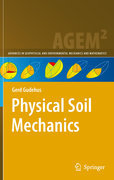
Soil is matter in its own right. Its nature can be captured by means of monotonous, cyclic and strange attractors. Thus material properties are defined by the asymptotic response of sand- and clay-like samples to imposed deformationsand stresses. This serves to validate and calibrate elastoplastic and hypoplastic relations with comparative plots. Extensions capture thermal and seismic activations, limitations occur due to localizations and skeleton decay.Attractors in the large characterize boundary value problems from model tests via geotechnical operations up to tectonic evolutions. Validations of hypoplastic calculations are shown with many examples, possible further applications are indicated in detail. This approach is energetically justified and limited by critical points where the otherwise legitimate continuity gets lost by localizationand decay. You will be fascinated by the fourth element although or just as it is so manifold. Soils are complex in composition, state and behaviour Graphical representation helps to lighten the constitutive relations The concept of related evolutions of state and shape works throughout more complex boundary value problems It is a powerful tool which is useful for the description of soils and their properties INDICE: Prologue.- introduction.- simple psammoids.- simple peloids.- psammoids with reversals.- peloids with reversals.- pore fluid.- bridging gaps.- localization.- fabric.- boundary conditions.- one-dimensional evolutions.- plane-parallel evolutions without ssi.- plane-parallel evolutions with ssi.- axi-symmetric evolutions.- less symmetric evolutions.- critical phenomena.- epilogue.- references.- symbols and acronyms.
- ISBN: 978-3-540-36353-8
- Editorial: Springer
- Encuadernacion: Cartoné
- Páginas: 850
- Fecha Publicación: 01/08/2010
- Nº Volúmenes: 1
- Idioma: Inglés
